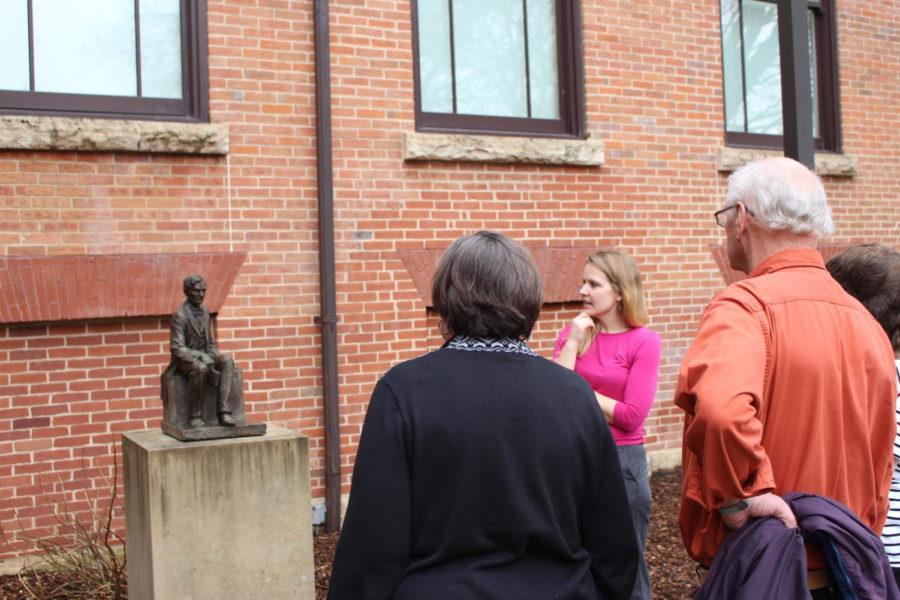Lincoln’s legacy and ISU connections revisited on President’s Day
February 21, 2017
Museum patrons commemorated President’s Day at Morrill Hall by exploring Christian Petersen’s works depicting Abraham Lincoln, one of the United States’ most recognizable presidents.
Nancy Gebhart, educator of visual literacy and learning, noted that Lincoln’s image is incredibly accessible because of its familiarity and use today, with his image being found on both the penny and the 5-dollar bill. The 16th president’s deep-set eyes and 6-foot 5-inch frame allow him to be easily recognized in photographs and as works of art.
“Lincoln is an incredibly popular subject among American sculptors,” Gebhart said. Gebhart cited the sculpture at the Lincoln Memorial by David Chester French as just one recognizable public depiction of Lincoln.
Gebhart displayed several bas-relief, or low-relief images of Lincoln, noting Petersen’s depiction of Lincoln’s unique physique.
Lincoln’s image may be more recognizable because he was the first president to be photographed extensively. During Lincoln’s time, shorter shutter speeds of cameras allowed for convenient mass distribution of images of the president.
Gebhart compared photography as a political tool to President Barack Obama’s use of social media in the 2008 campaign. Both types of media allowed the public to connect on a visual level with a political figure.
Lincoln’s image is prominently featured in Morrill Hall because of his role in signing the 1862 Morrill Act, to which Iowa State University owes its status as a land grant university.
The act, introduced by Vermont senator Justin Smith Morrill, allowed for universities to provide a practical education in engineering, agriculture and, due to the Civil War, military tactics. This made land grant universities a vital part of the Union’s war effort.
“Without the Morrill Act, Iowa State University wouldn’t exist,” Gebhart said.
Gebhart cited a sculpture of a younger Lincoln displayed outside of Morrill Hall as her personal favorite piece of Christian Petersen’s Lincoln work. The sculpture was originally crafted by Petersen for a school in Gilbert, Iowa.
University Museums worked to locate the sculpture and bring it to Iowa State University in order to conserve the original piece. Though the displayed piece is a replica, Gebhart said the sculpture still communicates Lincoln’s role as a self-taught individual who, with little formal education, became a lawyer and then President of the United States.
“[The sculpture] served as an inspiration for students and emphasized education,” Gebhart said.















